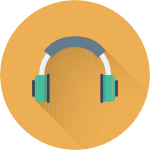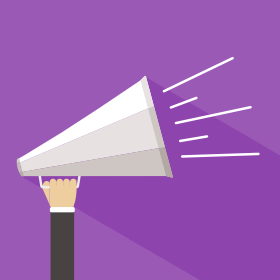
“I don’t mean to be blunt. But are your solos truly improvised?” The question came from an audience member in the back of the room.
On stage was a huge mass of frizzled hair. Underneath it was jazz guitarist Pat Metheny. He was at a Q&A session at the North Sea Jazz festival and about to explain improvisation in a way I’d never forget.

To many, preparing nothing and still being able to produce music is simply astounding. Improvisation might seem like it involves some divine inspiration that descends only upon true musical geniuses.
It can even be hard to believe that when someone 'improvises' a solo, nothing has been written in advance, right? And that’s where the question from that audience member came from. Is this for real? Here’s how Pat Metheny replied:
In other words, just like we draw upon our vocabulary all day to speak and communicate, as musicians we use our musical 'vocabulary' when we improvise. Just like we respond to everyday situations with words we use all the time, we respond to musical situations with a blend of rhythms, melodies, phrases and sounds we’ve used before.
Improvising isn’t about coming up with completely new and original ideas. Not at all. It’s about applying our musical vocabulary in a way that makes sense and sounds good.
This means that improvisation doesn’t rely on divine inspiration that only geniuses can tap into. In fact, it's much more mundane and down to earth. And, it’s something you can do.
But how exactly does improvisation work? And how should you learn to improvise on guitar? Where should you start and how can you improve when your progress stalls? That’s what we’ll look into in this article. We'll explore how you can tap into your musicality to improvise in a way that sounds musical and natural.
SECTION 1
How does improvisation work?
If you’re over ten years old, you’ve heard more music in your life than Mozart or Beethoven. Insane isn’t it? Music is simply everywhere. On the radio, in bars, in the mall, tv shows, movies, video games… Even bathrooms and elevators have music. And through those thousands of hours of listening experience you have grown a large musical vocabulary. Your head is filled with melodies, rhythms and other musical information.
Improvisation is about expressing that vocabulary using either your voice or an instrument. It’s about imagining something in your head and playing that thing.
Now, this process is often called ‘playing what you hear’. But that way of putting things can be a little confusing. I remember a masterclass by ‘musician whisperer’ Kenny Werner where someone brought it up:
You can’t hear something first and then play it half a second later. There’s just no time. As it turns out, playing music is exactly like speaking. When you’re having a conversation are ‘saying what you hear’? Not really, right? You’re not first ‘thinking your thoughts out loud in your mind’ and then saying those exact thoughts. The process is much more streamlined. More automatic. Your friend says something and your mind automatically generates thoughts about it. Somehow, you make your vocal cords and your mouth form the words to express those thoughts. All of this feels almost completely effortless - it just happens.
Just like your mind can ‘think thoughts’ it can ‘think music.’ Academic Edwin E. Gordon calls this ability to hear music in your mind 'audiation'. In his words: "Audiation is to music, what thoughts are to speech.” Or put differently: “to audiate means to think music in the mind.” (source)
I like this term because it emphasises how playing music and speaking are so similar. When you’re talking, you have a thought and more or less simultaneously say what you’re thinking. You start sentences without being sure how you’ll end them, but you make it work. Improvising music is exactly like that. You put your musical imagination in the driver’s seat and try to play whatever it comes up with. At its best, improvisation is automatic, effortless and lightning fast.
But enough talking about improvisation. It’s time to get your hands dirty. Just like learning to speak fluently took practice, so does learning to improvise music. In the next section, I’ll get you started with a whole bunch of exercises.
SECTION 2
How to Start Improvising
Pick one of these sentences:- This is my favourite dance
- I am hopeless and destroyed
- I woke up this morning, my baby was gone
- Last night I had a dream about you
Got one? Great.
Quick heads-up: in a moment, I’m going to ask you to sing. So feel free to close your doors and windows and evacuate women and children. Next, switch on this backing track.
Take a moment to listen and get into the music. Next, say the sentence you picked out loud in a way that makes sense to you. Now, do it again, but this time sing it! Do it now. It doesn’t matter at all how you sing. If you feel stuck, try to make it as corny, cliche and lame as you possibly can.
There you go! You have just successfully improvised music! Even if every word was on the same note, that’s a melody you just improvised! Give that another shot. Here are some ways to switch things up:
- Use a different sentence
- Make the melody as fast as possible
- Make the melody as slow and drawn out as possible
- Use a large jump between notes somewhere in the melody
- Make one syllabyle really long. (For example: “This is my fa-vo-riiiiiite dance.”)
I hope this little exercise has given you a taste of what improvisation is like. Of course, next you want to improvise not just using your voice, but using your guitar. In the next section, we’ll get started with just that.
SECTION 3
Seven Guitar Improvisation Exercises
As we saw in section 1, improvisation means tuning into your musical imagination and playing whatever comes to mind. Knowing that, you can practice improvising simply by putting on a record and just playing whatever you come up with.
Of course, this is easier said then done. First of all, it’s not easy to play whatever your musical imagination comes up with (i.e. to ‘play by ear’). We’ll look into that in section 4.
But secondly, knowing that you can play anything can be a little overwhelming. And in fact, we’re usually much more creative when our options are limited. So in this section, I want to give you some exercises and small improvisation challenges to warm up your musical imagination and get you tuned into it.
If you have a little more experience with improvisation, these exercises can still be nice challenges to spark some inspiration for your improvisation.
1. Improvise using one note
The challenge of this exercise is to play something interesting even though you only have one note. So what other weapons do you have at your disposal? An important one is rhythm. Try to make a rhythm that fits nicely with the backing track and repeat it. Also try playing around with soft and loud notes. Lastly, don't be afraid to leave long pauses. You don't need to play all the time.
You can do this with any track you like. Just pick a note you think sounds good. If it sounds horrible at any point, just move down or up one fret and you’ll find a note that sounds much better. For now though, give this track a try and only play the sixth fret on the high E string.
2. Improvise using two notes
Next challenge: see if you can do the exact same thing as the first exercise, but now use two notes. For the track below, use the third and sixth fret on the high E string. Remember that you can still repeat the same note a bunch of times and you don’t have to go back and forth between the first and second note all the time.
3. Stick to four notes
Add the notes at the third and sixth fret on both the b string and high E string. Now you’ll have four notes at your disposal. First, play each of the notes individually and memorise what pitch ‘belongs' to what fret. See if you can sing along with each note as you play it.
Next, see what you can make of just these four notes. Don’t forget the first two exercises though! Use pauses and rhythm. Repeat the same note a bunch of times before you move on the next. And don’t forget to play around with soft and loud notes. Also, try to start off by repeating only the lowest note (i.e. the 3rd fret on the b string) and only add the other notes one by one.
If you find yourself randomly pressing notes, stop for a moment and try to go back to your musical imagination. If you’re not playing from there, you won’t sound good!
4. Make a simple phrase and play around with it
Create a simple phrase using the third and sixth fret on both the b string and high E string. It doesn’t have to be brilliant, anything will do. Now play over the chord progression once (from 0:20 until 1:21 in the backing track below), where you just try to repeat that single phrase. Remember that you can play around with the timing.
Next, try this again, but now try to add one or two notes before your phrase. After that, do the same thing but add one or two notes after your phrase.
5. Put on a track and stick to a single string
Pick a string, it doesn’t matter which one. Now put on a track and play any note on that string. If you think it sounds okay, remember that note and play the next note. If you don’t think it sounds good, slide up or down one fret and you’ll probably find a better sounding note.
Continue this process until you have about five notes that sound good and try to improvise using only those notes. After a while, you might want to add a few more notes, but remember that there are usually only seven notes on each string that sound good (from the first to the twelfth fret that is - after the twelfth fret the notes on the string repeat themselves).
6. Connect the dots
For this next challenge, we’ll stick to the high E string. Start the backing track below and play the open high E string. Now, play the seventh fret of the high E string. They both sound pretty good, right?
Here’s your challenge. Find a ‘path' from the high open E string, to the seventh fret. First play the open string, then the seventh fret. What would a melody that would connect these two notes sound like? Sing or hum it first, then figure out how to play it on your guitar.
If you want to try the same thing with two different notes, try the open b string and the eight fret on the the same string.
7. Put away your guitar and sing
Okay, time to take the shackles off! Hopefully these exercises have gotten you in some sort of a creative state of mind. Play the track below (or any track you like) and improvise a melody using your voice. Don’t worry about singing the ‘right’ notes. Your lifetime of listening to music will take care of that!
Bonus points: record your singing or humming and then figure out how to play your improvisation on guitar!
SECTION 4
Accessing your vocabulary: How to Play Guitar by Ear
Tuning in to your musical imagination is the key to improvising. But there's another vital skill you need to develop: the ability to play whatever your musical imagination comes up with. To play guitar by ear.
Let me ask you this. If I play you a melody and ask you to sing it back to me, you would have no problem doing so, right?
This is really quite extraordinary. You listen to a piece of music, ‘record' the musical information to your brain and you know how to manipulate your vocal cords in order to reproduce the melody.
But hand most guitarists their instrument, and they’d have a much tougher time doing this. It’s funny, because we’re only changing the last step. You’re still listening to music and recording a melody to your mind. But then, instead of your voice, you’re using your instrument to reproduce it.
That means that if you want to learn to play guitar by ear, you’ve already largely tackled the first two steps. You know how to listen to a piece of music and remember what it sounds like. What requires the most practice is the last step: playing it on your guitar. We need to master our instrument in the same way that we’ve mastered our vocal cords.
To an extent, you’ve already been doing this. In the exercises above where we limited ourselves to only two, three or four notes, after a while you knew how each note was going to sound before you played it. That’s playing by ear.
But how do you learn to control your guitar as well as you control your vocal cords? For an in-depth answer, check out my detailed step-by-step guide to playing guitar by ear. It gives you five steps and exercises to start playing guitar by ear from scratch. I won’t repeat the entire article here, but let me share my favourite ways of practicing this.
Learn songs by ear
Everyone looking to train their ears should start by learning songs by ear. It's the most effective way to practice hearing a sound and figuring out how to produce that sound on your instrument.
To find out more about how you can learn this, check out my step-by-step guide to learning songs by ear here.
You can also get started right way with the following exercise. Just grab your guitar and follow the note-by-note instructions!
Hope that went well! For practice songs like this one, check out my course Make Your Ears Awesome. It will take you through dozens of songs and make you better and better at figuring out songs by ear. The first couple of lessons are free, so feel free to grab them through this button:
Figure out your own ideas
If you feel comfortable figuring out riffs and melodies by ear, this is a great next step. Here’s what to do. First, put on a song or a backing track. It can literally be anything you like.
Next, switch on a recording on your phone. Take a moment to tune into the music and then improvise a melody using your voice. Hum, sing, whistle - anything is fine, as long as you don’t use your instrument. Next, listen back to your recording and figure out what you’ve sung on your guitar.
The great thing about this exercise is that you’re figuring out melodies that you came up with. Everyone has their go-to ideas, melodies or motifs that come up regularly, so it's super useful to figure out how to play them.
SECTION 5
How to Expand your Vocabulary
Improvising is about expressing your musical vocabulary to say meaningful things. As we saw in the last section, by learning to play by ear, we come better and better at accessing our musical vocabulary. We become better at playing the things our musical imagination comes up with.
Another way to improve our improvisation, is to expand our vocabulary. The better your vocabulary, the more you can say and the better you can articulate yourself. The best improvisers have a huge musical vocabulary, which allows them to express themselves eloquently.
Especially if your improvising feels dull or boring to you, this is what you need to do.
Expanding your vocabulary
So, how do you build your musical vocabulary?It starts by learning music you like. This can be anything. Guitar riffs, vocal melodies, hip hop bass lines, classical themes… Really anything. After I’d been playing a couple of years, my teacher recommended I learn a whole bunch of melodies to make my playing more melodic. I decided to learn exactly 100 riffs, themes and melodies. It took a while, but the pay-off was great. After I’d learned those 100 tunes, all of it slowly started seeping into my playing. It opened up my eyes to the many things that are possible on the guitar.
When it comes to soloing specifically, you should definitely learn solos by musicians you really enjoy. This is how all great improvisers became great. They learned from their heroes. Don’t forget that you can learn a lot by learning solos from other instruments too: piano, saxophone, trumpet… There are so many inspiring musicians to learn from, so don’t limit yourself to guitarists!
To make this new vocabulary show up in your playing, you do need to know it on a deep level. You need to really understand how the vocabulary works and in what context you might be able to use. Here are some suggestions on how to do that:
- Figure out everything by ear. This really makes it stick in your brain much more than when you learn it off a video or notation. Check out this step-by-step guide to learn how.
- Practice playing the licks or melodies outside the context you found it. If you only play along to the recording where you originally found it, you’ll only really understand how it works in that piece of music. So practice it in different songs, different keys, at different tempos, in different positions and in different octaves.
- Create variations on the licks and melodies. Play around with them. Change a few notes here and there. Try making it a bit shorter or longer. Once you can easily play variations, you’ll be more flexible and applying your new vocabulary will be easier.
Even with these tips though, expect it to take a while for your new vocabulary to show up in your improvisation. Even for the best musicians in the world the process of adopting new vocabulary and having it come up in their playing naturally takes at least two months. (I say naturally, because we can always force ourselves to play new vocabulary - but at the point we’re sort of overruling our musical imagination, which usually doesn't sound as good.)
Wait, what about originality?

The way to expand your vocabulary, is to learn phrases, licks, melodies and solos we like. We steal the parts we like and add it to our own vocabulary. Now, this makes some guitarists a little uneasy. Aren’t we supposed to be original? Isn’t learning licks you find online cheating? No one wants to be a Jimi Hendrix or Slash copy cat, right?
It's a reasonable thought, but stealing from other artists you like really isn’t an issue. All your favourite musicians stand on the shoulders of those who came before them. Jimi Hendrix went to Buddy Guy shows and would figure out how to play his licks at home. Stevie Ray Vaughan figured out Hendrix, and John Mayer figured out Stevie Ray Vaughan. When Kurt Cobain wrote ‘Smells Like Teen Spirit’ he was just trying to copy the Pixies, one of his favourite bands.
In truth, what makes you sound original is the unique blend of all your influences. System of a Down mixes Armenian folk music with rock and metal. Tigran Hamasyan also draws upon Armenian folk and metal, but mixes it with jazz. Both are super original.
SECTION 6
What about scales?
You might have noticed that so far, I haven’t mentioned scales at all. Which is funny, because it’s the first thing many guitar teachers will bring up when explaining improvisation. (This used to include me by the way.) In your first guitar improvisation lesson, your instructor will show you a scale shape on guitar, tell you what it’s called (most likely A minor pentatonic) and then say: “You can play all the notes in this scale shape and none of them will be wrong!”
And it’s true. None of the notes in that scale shape will sound wrong. But none of them will sound exactly right either. When students follow these instructions, their playing tends to sound a bit unnatural and awkward. This is a problem many guitarists run into. Here are a just a few comments I found online:
Comments like these are the reason I haven’t mentioned scales up until now. If you start with a scale shape, you run the risk of not following the ‘golden rule’ of improvisation: to play from your musical imagination (see section 2 above). Instead, many players end up just ‘pushing buttons’ that you they were told were ‘not wrong’. But playing ‘not wrong' notes is not the same thing as making music.
So, do you need scales to improvise?
Here’s the funny thing: if you’ve done any of the exercises in the sections above, you’ve used scales. Your ears know which notes sound good and which don’t. Your brain can’t help but use scales: it’s simply how we’re wired. Bobby McFerrin brilliantly demonstrates this in this video:
So, every melody your musical imagination comes up with, is based on a scale. And because of that it’s useful to know how to play that scale on your guitar. Learning scale shapes makes it easier to navigate the fretboard and make your musical ideas come out of your instrument - to play them by ear. But I can’t emphasize enough that the order is:
SECTION 7
More Resources
I hope this guide has helped you to either get started with improvisation or get better at it. Of course, there's much more to learn. Here's a quick overview of all the articles and courses related to improvisation I've created. Check them out!
How to Learn Riffs and Melodies by EarA step-by-step guide to how you actually figure out a melody or riff using your ears and your instrument. Check it out here!
Make Your Ears Awesome: Riffs and MelodiesThis course helps you learn how to figure out riffs and melodies by ear using interactive TAB.
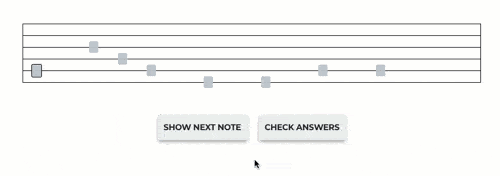
The course takes you through 51 real songs that gradually become more challenging. If you're interested, you can read more about the course here. You can also go ahead and try the first couple of lessons for free by enrolling in the sample course below.
If you're interested, you can try the first five songs for free by enrolling in the sample course below.
How to Play Guitar by EarA detailed guide to how you learn to play whatever you hear. Featuring a multiple exercises that progressively become more challenging. Read it here!
Why Should You Learn Music Theory?A quick article about music theory. Why is it important? When should you learn music theory? And what's the right approach? Read the article here!
Music Theory for Guitar [5-step roadmap]A more detailed guide on music theory, specifically for guitar players. It lays out a road map that explains the five steps towards building up a solid, and practically useful understanding of music theory. Check out the guide here!
How to Play Better Guitar Solos?Think of this as the follow-up to this article. It deals with specific issues you might run into such as your playing sounding bland or 'being stuck in a box', as guitarists sometimes say. I'll be expanding it soon, but what's on there now is worth checking out! Read the article here!
Thoughts? Questions?
Improvisation is one of my favourite topics to teach. I hope this guide has been helpful in getting you started or keeping you going. Of course, I'm sure it there are plenty of questions it leaves unanswered. So let me know if you have any thoughts or questions! Simply send me an email: just(at)stringkick.com.



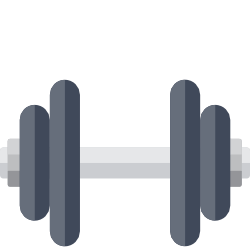
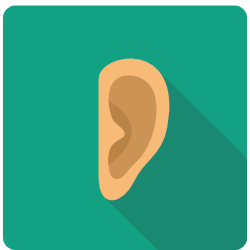
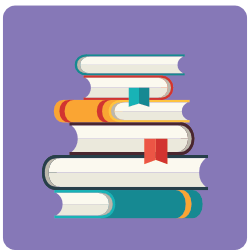
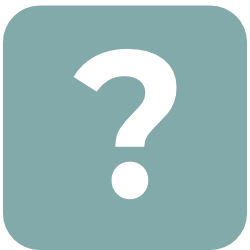
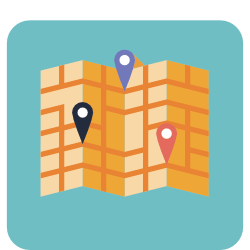


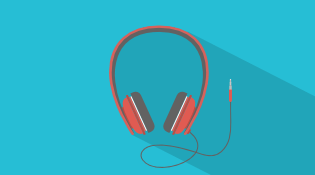
![Title image for How to Play Guitar by Ear [Step-By-Step Plan]](https://www.stringkick.com/wp-content/uploads/2015/04/Play-by-Ear.png)
